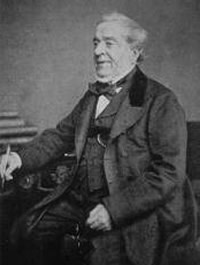
William Banting is known for the being the first person to promote the benefits of a low-carb diet , which was originally referred to as the “Banting diet”.
Almost 150 years after his renowned booklet ‘ Letter on Corpulance, Addressed to the Public ’ was published in 1863, the Banting diet has been backed up by several clinical trials as being safe and effective for weight loss, and it is now finally being acknowledged as a beneficial diet for people with diabetes.
Low-carb origins
Banting was not a scientist. In fact, he was a highly skilful carpenter and notable undertaker to the rich and famous, including King George III in 1820.
In his thirties, Banting started to become overweight, and was told by a surgeon to do more exercise Banting found, though, that this just increased his appetite.
He tried a variety of weight loss options such as the starvation diet and bathing in spa waters, but he eventually wound up in hospital for his weight.
By 1862, aged 65, Banting weighed 92 kg (202 lbs or 14st 6 lbs) and was only 165cm (5 ft 5 inches) tall, giving him a BMI of over 33 kg/m2. At the point of giving up on his weight loss, he also had an umbilical rupture, his sight was failing and he was becoming increasingly deaf.
But then Banting met Dr William Harvey, an ear, nose and throat specialist. It turned out that Harvey had been attending lectures in Paris by Claude Bernard on the liver, which led Harvey to think that food elements play a significant role in diabetes.
Harvey was as interested in Banting’s obesity as much as his hearing loss and he instructed him to give up bread, butter, milk, sugar, beer and potatoes – foods that all contained starch and sugar.
Five months later, Banting was down to 184 lbs and, by the following August, 156 lbs. Moreover, his hearing had returned, his sight had improved and he was more agile.
Open letter
Documenting his progress, Banting wrote an open letter in the form of a personal testimonial called Letter on Corpulence, Addressed to the Public.
He didn’t charge anything for the first two editions of his self-published book – he had printed 1,000 copies of the first edition and 1,500 of the second, and hoped it would benefit working-class people with ailments who didn’t have the time to convalesce following hospital treatment.
Banting detailed his new diet, which entailed four meals a day, consisting of meat, fruits, greens and dry wine, while removing all sugar, saccharine and starch.
The book was so popular that he sold the third edition to the general public, but the scientific community deemed Banting’s work “unscientific” as it lacked a convincing theory about how the diet worked.
Banting remained at a normal weight and lived comfortably until his death in 1878, aged 81, but it would be another 50 years before studies investigating his diet demonstrated scientific evidence of its efficacy.
Clinical trials
In 1928, one of the first dietary clinical trials conducted by Dr Vilhjalmur Stefansson and Dr Karsten Anderson showed that participants felt better and had lower cholesterol when eating a carbohydrate-restricted diet.
And since then, despite the erroneous introduction of low-fat guidelines in the 1980s , research has continued to back the low-carb diet, with Dr David Unwin’s pioneering studies into the diet leading to staggering results.
By introducing his patients to a low-carb diet, Dr Unwin managed to save £42,000 in deprescription costs alone. The Low Carb Program and Dr Unwin’s work is all built on Banting’s original research, and the low-carb diet is finally, almost 150 years after Banting died, starting to become accepted in mainstream science as a healthy and effective diet for people with diabetes.




